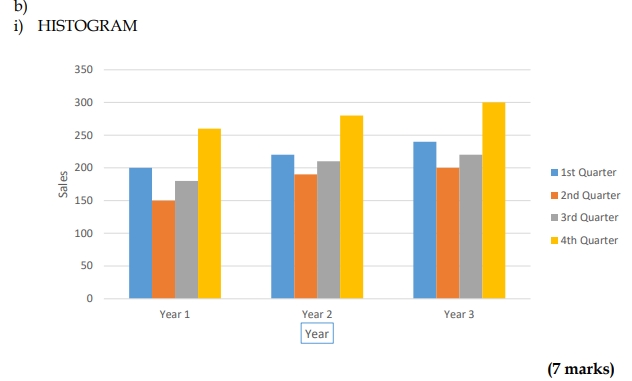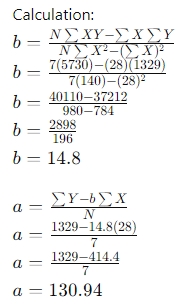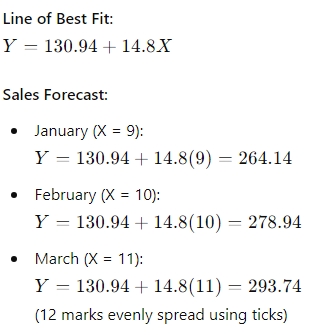- 20 Marks
Question
The monthly demand for maize (in hundreds of bags) for the last year in Bosua Market is shown below:
| Month | Jan | Feb | Mar | Apr | May | Jun | Jul | Aug | Sep | Oct | Nov | Dec |
|---|---|---|---|---|---|---|---|---|---|---|---|---|
| Demand | 42 | 43 | 40 | 44 | 50 | 47 | 53 | 49 | 54 | 57 | 63 | 60 |
Required:
(a) Calculate the regression line y=a+bxy = a + bxy=a+bx for the data. (9 Marks)
(b) Using the regression line in (a), determine the forecast for next year:
(i) January, (1 Mark)
(ii) February, (1 Mark)
(iii) March. (1 Mark)
(c) Determine the Standard Error in forecasting demand in (b). (8 Marks)
Answer
(a) ,(b) and (c)
![]()

![]()
![]()
b)
i) y=37.67 + 1.92(13) = 62.63
ii) y=37.67 + 1.92(14) = 64.55
iii) y=37.67 + 1.92(15) = 66.47
c)
Standard Error :
![]() =
= ![]()
- Tags: Demand forecast, Forecasting, Regression Analysis, Standard error, Trend Analysis
- Level: Level 1
- Topic: Forecasting
- Series: NOV 2015
- Uploader: Joseph



